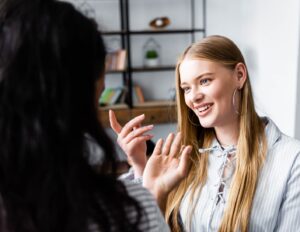Alcoholism is a chronic disease that impacts both the person drinking and those around them. The National Institute on Alcohol Abuse and Alcoholism (NIAAA) reports that the number of American adults with alcohol use disorder (AUD) is about 14 million. At the same time, 1 in 10 children lives with a parent who has an alcohol problem.
Addressing this disease is vital, but some people may question whether it is better to stop drinking all at once (“cold turkey”) or if it’s safer to taper off their alcohol consumption slowly. In fact, it is much safer to gradually decrease the level of alcohol an individual drinks instead of stopping cold turkey. There can be severe side effects from abruptly discontinuing drinking, including death.
Why Quitting Cold Turkey Is Dangerous
When someone with a drinking problem chooses to stop drinking, that is a positive step. However, it is essential to deal with alcohol use disorder safely. Quitting drinking cold turkey may lead to severe consequences.
Chronic alcohol use changes the body, which then adapts to the constant presence of alcohol. Since alcohol is a depressant, it slows the function of the brain and the nervous system. When the brain doesn’t have alcohol present, withdrawal symptoms can occur. When that happens, the central nervous system has to adapt again.
During withdrawal, a person may experience rapid heart rate, higher temperature, and excessive sweating, among other issues, as their body works to rebalance itself. Sometimes these symptoms become severe. This particular withdrawal form is known as alcohol withdrawal syndrome (AWS). A person experiencing AWS may experience shaking, headache, high blood pressure, anxiety, and increased heart rate, or tachycardia. They may also suffer delirium tremens (DT), which can be deadly. Symptoms of DT include:
- Seizures
- Hallucinations
- Confusion
- Sensitivity to light
- Nausea
DTs are more common if someone has a previous experience with alcohol withdrawal, if they drink heavily, or if they have struggled with addiction to alcohol for more than ten years.
Both AWS and DT can result in physical issues, too, such as:
- physical trauma due to seizures
- metabolic issues
- low electrolyte levels
- cardiac complications, such as arrhythmias and sudden death resulting from a heart attack
- muscle weakness, coma, and the reduction or stoppage of normal breathing functions due to low levels of phosphate (hypophosphatemia)
Ketoacidosis is another complication associated with abruptly quitting alcohol. This condition can happen due to the way alcohol affects the pancreas’ ability to produce insulin. Symptoms include excessive thirst, fatigue, frequent urination, and vomiting.
What Is A Standard Drink?
Not all forms of alcohol contain the same amount of alcohol content. For instance, five ounces of wine has an alcohol content of 12%, while 12 ounces of most beers contain 5% alcohol.
All of the below equal one serving of alcohol:
- 12 ounces of regular beer = 5% alcohol content
- 8-9 ounces of malt alcohol = 7% alcohol content
- 5 ounces of wine = 12% alcohol content
- 1.5 ounces of distilled spirits (gin, rum, tequila, vodka, whiskey, etc.) = 40% alcohol content
Tapering Off Alcohol Consumption
Tapering off drinking does not mean the individual won’t experience withdrawal symptoms. But the symptoms may be less severe or life-threatening when consumption decreases.
Changing to another form of alcohol won’t improve withdrawal outcomes if the amount consumed doesn’t decrease.
Unfortunately, a person’s ability to effectively taper off their drinking can be challenging. The person may try to cut back the amount they drink per day or switch to another, less favored form of alcohol. But the reality is adhering to the reduction can be difficult if the person encounters any triggers that encourage drinking. Also, the individual may not have support to help them make the change. Finally, heavy drinkers may experience withdrawal symptoms even with a slight reduction in their alcohol intake.
What can be most helpful for someone with alcohol use disorder is to seek medical help to detox. Not only is it safer to stop drinking under the care and guidance of health care professionals, but it also may be more effective.
Safe Withdrawal From Alcohol
Medical detox is the recommended way to stop drinking for anyone living with AUD. In a medical detox facility or program, the detox team will monitor the individual as their alcohol consumption decreases and their body removes all the toxins associated with alcohol.
During medical detox, medical professionals observe the side effects and withdrawal symptoms people experience. Clinical personnel may give individuals certain medications to help address and manage these symptoms, such as sleep aids, antidepressants, mood stabilizers, nonsteroidal pain medications, and gastrointestinal medications.
During the detox process, medical personnel will also monitor individuals’ vital signs. Individuals may also receive fluids to manage dehydration. They can benefit from balanced meals to help improve their mood and mental health. All these efforts work together to minimize withdrawal symptoms and ensure the person is safe as they eliminate alcohol from their system. On average, detox programs last five to seven days, although this can depend on the individual and the severity of their addiction.
Signs of Alcohol Use Disorder
Like any addiction, the severity of alcohol use disorder can vary from person to person. If in the past year an individual can answer yes to two or more of the questions below, they may have a drinking problem:
- Has the person drunk for longer than they intended or had more to drink than they planned?
- Have they had a desire to cut down or stop drinking or tried to but couldn’t?
- Have they spent a lot of their time drinking or recovering from drinking?
- Have they felt a strong need to drink?
- Has drinking—or being sick from drinking—regularly impacted their family life, job, or school?
- Have they kept drinking even though it was causing trouble with family or friends?
- Have they given up or cut back on activities that they enjoyed so that they could drink?
- Have they found themselves in dangerous situations while drinking or after drinking, such as driving drunk and having unsafe sex?
- Have they kept drinking even though it made them feel depressed or anxious or contributed to a physical health problem?
- Have they had to drink more and more to feel the effects of the alcohol?
- Have they experienced withdrawal symptoms when the alcohol was wearing off, such as trouble sleeping, shakiness, irritability, anxiety, depression, restlessness, nausea, and sweating?
Causes and Risk Factors for Alcoholism
A person’s risk of developing alcoholism comes from a complex blend of genetic, psychological, social, and environmental factors. Some people may experience alcohol differently than others, resulting in addiction. Over time, alcohol can affect parts of the brain that regulate pleasure, judgment, and the ability to exercise control over behavior. This change may also impact whether someone develops a problem with alcohol.
An alcohol use disorder can develop at any age, although it most commonly develops in a person’s 20s and 30s. Other potential risk factors that increase someone’s chances of AUD include:
- Beginning to drink at an early age
- A family history of alcoholism
- Regular drinking over an extended period
- Mental health issues, including depression
- A history of trauma
- The impact of societal and other cultural factors that glamorize drinking
Health Implications of Alcoholism
Excessive drinking can affect a person’s well-being in numerous ways. Individuals who drink heavily have an increased risk of a variety of liver diseases, including hepatic steatosis (increased fat in the liver), alcoholic hepatitis (inflammation of the liver), and cirrhosis (irreversible destruction and scarring of liver tissue).
Other physical ramifications of heavy or excessive alcohol consumption over time include:
- Digestive problems
- Heart issues
- Complications linked to diabetes
- Erectile dysfunction
- Menstrual disruptions
- Eye problems
- Congenital disabilities
- Bone damage
- Neurological complications
- Weakened immune system
- Increased risk for cancer
- Interactions with other medications
Treatment Options For AUD
No one solution for alcohol use disorder works for everyone. Treatment should address an individual’s needs and their specific situation. There are, however, some common approaches used to help individuals stop drinking safely and effectively. They include behavioral therapy, medications, and support groups.
Behavioral treatment encompasses therapy to change the behaviors that led to or contributed to excessive drinking. Two of the most well-known options are cognitive behavioral therapy (CBT) and motivational enhancement therapy (MET). CBT focuses on learning a person’s triggers to alcohol abuse and discovering new coping skills. MET identifies the advantages and disadvantages of treatment to strengthen a person’s motivation to stop drinking.
To date, the FDA has approved three medications for the treatment of AUD: disulfiram, naltrexone, and acamprosate. None of these medications are addictive, but neither are they a cure. Instead, they can cause unpleasant nausea when someone drinks (disulfiram) or block the brain’s receptors that make a person feel good when they drink (naltrexone). The final option, acamprosate, helps reduce alcohol cravings.
The final treatment is the support of other individuals with AUD through 12-step groups. These mutually supportive gatherings provide peer feedback and help navigate life without alcohol. The most well-known is Alcoholics Anonymous (AA), but other options are available.
Relapse and AUD
Alcoholism is a chronic disease, and relapse is often a part of recovery. Like any chronic condition, such as diabetes or heart disease, alcoholism can be treated but not cured. A relapse is often a sign that the current treatment program needs to be updated or changed because it has become ineffective.
The NIAAA estimates that as many as 90% of people with AUD relapse at least once during the first four years of recovery. If a relapse happens, individuals shouldn’t feel ashamed. Instead, they should stop drinking and ask for help as soon as possible.
Getting support from peers, friends, and family to continue recovery is essential. Talking to a therapist can help address potential triggers that caused the relapse and help the individuals navigate challenges in the future.
Understanding triggers can be empowering for the person. The more aware someone is of the stressors that can lead them to drink, the better prepared they will be to manage these concerns.
Finally, anyone who relapses should develop a new plan with the help of their therapist to prevent future relapse. This process should include examining triggers, both old and new, finding new or more effective coping techniques, and identifying supportive people in the person’s life that they can turn to in the future before they drink.
Judgment-Free Treatment For Alcohol Addiction
Alcohol addiction is not caused by a lack of willpower. Overcoming alcohol use disorder can be a complicated and ongoing process.
But stopping drinking safely can help individuals overcome an addiction to alcohol faster. To aid in this process, a person should seek out professional guidance and treatment from a reputable addiction treatment program. Addiction specialists can help people in recovery understand their best options for getting sober safely. This is especially important when dealing with alcohol withdrawal, which can lead to fatal consequences if individuals try to go cold turkey on their own.
Here at Aftermath Addiction Treatment Center, we’re proud of the fact that recovering individuals created our facility. We understand that it takes time to say goodbye to alcohol. In addition to providing and using clinical and medical approaches and techniques, we help individuals recover by providing them the empathy, love, understanding, compassion, direction, guidance, and treatment they need. Contact us today to learn more.








